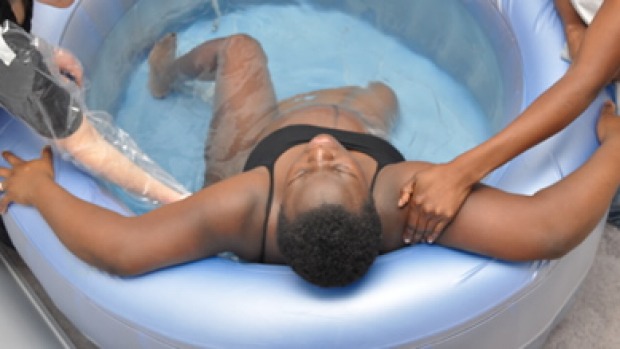
Facts verified by Dr Raewyn Teirney.
Once labour is underway, the positions the mother decides to take will have an effect on:
- Her comfort level during contractions
- Her sense of control
- The shape of the pelvis in moving the baby’s head into an optimal position for birth
The position a woman adopts can be one of many including:
- Standing and leaning over something such as a bed or a chair
- Standing and leaning back against something such as a wall
- Sitting astride a chair, birth stool or fit ball and leaning forward onto the knees
- Squatting
- Going onto all fours and leaning over completely
- Lying down flat on the back
- Lying down on either the left or right side of the body
- Sitting up with legs stretched out in front
- Sitting in a legs crossed, somewhat elevated position
Because gravity helps the baby’s head to bear down on the cervix for dilation and makes contractions more effective in moving the baby forward through the birth canal, upright positions are said to be more ideal for the first and second stages of labour, before lying or sitting down to give birth to the baby and the placenta.
Some medical professionals believe that women who lie down more throughout labour will take longer to give birth and are more likely to have assisted deliveries with ventouse and forceps, however it is important that women find positions that reduce the pain they are feeling and this should be taken into account when deciding whether to lie down or be upright.
There may also be certain positions that are more ideal for specific circumstances during labour such as women who have strong backache due to a posterior positioned baby, and women who are very tired and these should be discussed with the doctor or midwife. Furthermore, because an epidural creates numbness from the waist down, women who have undergone one usually have no choice but to sit or lie down on a bed and may need assistance to move from side to side or up or down.
FIRST STAGE OF LABOUR
It is typical for women to feel agitated and unable to sit still during the early stages of labour, such as pacing, swaying or rocking from side to side. These actions do make a difference in progressing labour but women may benefit from lying still during the latent phase as the cervix expands to four centimetres, so that they are less tired in the active and transition phases of the first stage of labour where the cervix widens to ten centimetres.
Once contractions are intense and close together in these active and transition phases, women feel more inclined to stay still in the position they are in, so they can concentrate on breathing through them rather than moving around, but they can still be upright.
SECOND STAGE OF LABOUR
As the baby shifts towards the opening of the vagina in this stage of labour, women need to be the best position to push during contractions as well as relax between them. Sitting positions where the legs are spread allow women to keep their pelvis wide and keep an appropriate amount of pressure on the perenium, and using pillows to stay propped up can help women to remain upright and stay comfortable at the same time.
Depending on who is helping your deliver, the obstetrician or midwife may also ask you to move into a certain position for this stage of labour.
Additionally, many women choose water births because the sensation of being in water combined with the lack of gravity makes them feel more mobile and able to position themselves in the best way possible to help the baby descend efficiently. Any women who would like a water birth should choose a hospital or birthing centre with this in mind, as water births are not available everywhere in Australia.
Dr Raewyn Teirney is gynaecologist, obstetrician and fertility specialist and a visiting medical officer at the Royal Hospital for Women in Sydney and also consults from her private rooms at Maroubra and Kogarah.